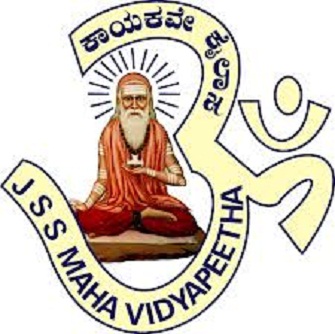Institutional Best Practices
Best Practice 1: Go Green initiatives to neutralize carbon effect.
Objectives of the Practice:
The College envisages Carbon neutralization initiatives in a concerted manner. The emission of carbon to the ambient air is plummeted through disciplined use of fuels for lighting, heating,
cooking, maintenance of greenery on one hand and harnessing non-conventional energy on the
other hand. The main objectives of this practice are:
- Reduction in carbon emission.
- Reduction of dependency on conventional energy
- Enhancement of the green coverage.
- Avoidance of use of plastic.
- Nurturing plants which emit more oxygen.
- Proper management of waste.
- Awareness on eco consciousness.
The Context:
The college being situated close to the historic kukkarahalli lake, has accorded top priority to
preserve the biodiversity of the place. Lush green campus with sylvan surrounding is one of the
highlights of the campus. In the sprawling 7.31 acres of land 51% is occupied by buildings, 25%
is green coverage, 15% playground and 9% other utilities. The roof top comprising of 51% of the
total area is available for solar panel installation. NSS units, Nature club, NCC and student
council are properly motivated towards eco consciousness. The city of Mysore being situated in
tropical zone has an average of 265 sunny days in a year. The solid waste generation is 0.5kg per
capita in the college and 2.8 kg per capita in the hostel. There were a total of 128 trees in the
campus in the year 2016.
The Practice:
- In tune with ‘Go Green’ slogan, the NSS Units and nature club have planted and
nurtured arborescent trees.
- Kerb stone low height plinths are erected to hold the rain water from running off in the
lawns which is a miniature model of rain water harvesting.
- 240 Solar panels are erected for heating water in the hostel complex.
- 587 Solar panels are erected for lighting and heating (150kv) on the rooftop of main building.
- Onus on conserving renewable energy.
- Vermi compost plant is made operational.
- 3 pits are constructed for composting green waste.
- 3 solar lamps installed to light up the avenues.
- Avoidance of the use of the CFC emitting equipment.
- Bio safety cabinet to neutralize pathogens.
- LED bulbs are fixed in a phased manner whenever florescent bulbs burnout.
- Sensor lights are installed in Principal chamber.
- Storm water is let into 3.375 cubic meter pit to enable percolation as a matter of rain water harvesting.
- Sprinklers are used for watering lawn.
- Waste water from water purifiers is let into garden.
- Ban on single use plastic in the campus.
- Use of paper in the office is minimized.
- Reuse of unused single side of papers.
- Conducting awareness Rallies.
- Creating awareness on environment through street plays, skits and distribution of pamphlets
- MoU with Shree Consultants Mysuru for safe disposal of biomedical waste.
- Provision for regular disposal of kitchen waste at the vermi compost plant.
- Disposal of food waste to piggeries.
- Regular disposal of other solid waste to the municipal waste collection agents.
- Reduce, Reuse, Recycling of furniture waste.
- Disposal of e-waste to the contractors.
- Disposal of Examination answer scripts to the agents who recycle the same.
- Restricted use of fossil fuel use motor vehicle.
- Vehicle pooling.
- Encouraging students and staff to use public transport.
- Encouraging students in using lesser paper.
- Providing study material through e-content.
- Reduction in the number of pages in answer booklets from 30 to 20.
- Conducting online examinations.
- Conducting online tests and CIA components.
- Correspondence through online means.
- Letting the toxic gases through fume hood pipes.
- Green chemistry including kitchen gardening at chemistry departments.
Evidence of Success:
- Effective neutralization of Carbon dioxide in the campus and neighborhood area.
- The verdant campus has further added to the aesthetic beauty of the place through well
manicured garden, grass carpeted amphitheatre, tall and sturdy palm trees and mango groves which house innumerable birds.
- Huge savings on electricity bill. Before the installation of solar panels, between
December 2019 & April – 2020. The college has paid an amount of Rs. 11, 73, 276
(Eleven Lakhs Seventy Three Thousand and Rupees Two Hundred Seventy Six only)
towards electricity bill. After the installation of solar panels, between June 2021 and
October 2021, the college has paid an amount of Rs. 1,45,804 (One Lakh Forty Five
Thousand and rupees Eight Hundred and four only) towards electricity bill.
- Increase in the number of students using public transport.
- Green and Energy audit reports are the testimony.
Problems Encountered and Resources Required:
- Maintenance of good ambient air quality amidst civilian habitation surrounding the campus.
- Funding the erection of rooftop solar panels.
- Waste segregation before collection.
- Convincing the students to use public transport.
- Practical difficulties in vehicle pooling.
- Bureaucratic bottle necks in axing dead woods.
Best Practice 2: Value additions through extra academic inputs
Objectives of the Practice:
The college has been making concerted efforts to add values to students at a continuous stretch.
Apart from imparting the formal education in the streams of their choice, the students are
bestowed with several extra academic inputs in the nature of value added programs and skill
development activities by:
- Making students feel more employable.
- Harnessing the innate capabilities of the students in furtherance of their personalities.
- Optimization of the physical facilities and human resources.
- Instilling ethical value amongst students
- Encouraging multi-disciplinary approach in studies.
- Providing high degree of flexibility in the value-added programs.
The Context:
- Present day complex marketing world has dynamism inflicted by knowledge explosion.
- Traditional and formal academic inputs at the colleges do not suffice to make students readily employable.
- The social media is making tremendous impact on the minds of the younger generation,
wherein ethical values are degenerating into social vices at a rapid rate
- The students profile in the college, which is admixture of urban, semi urban and rural has
a convenient environment for moulding characters and leading them towards becoming
responsible citizens.
- The pedagogy is highly motivated to project themselves towards students community in
as much as imparting skill based knowledge and teaching ethical values.
- Imparting quality and outcome based formal textual education in the classes do not offer
expected leverage in getting job offers for the students who graduate from the college.
The Practice:
- Introduction of 97 value-added programs.
- Certificate programs in first two semesters.
- Conferment of Diploma after completion of third and fourth semesters.
- Conferment of Advanced Diploma after completion of fifth and sixth semesters.
- 100% freedom in choice of the programs irrespective of the formal degree program enrolled
- Freedom for discontinuing the value-added program after second or fourth semester and
choosing another value-added program from the pool.
- In case the candidate discontinues at the middle level she can enroll for another VAP from certificate level.
- Bharatheeya sanskruthi (Indian culture) a compulsory paper for first year UG and PG students.
- Career orientation is the main thrust in the syllabi of value-added programs.
- Programs offered are: HRM, Foreign Trade, Insurance Management, Proof Reading,
Translation, Horticulture, Women Studies, Animation, Rural Development, Social
Welfare, Functional English, Good Governance & E-Governance, Retail Management,
Women Health and Hygiene, Marketing Management, Functional Hindi, Food &
Nutrition Science, Basic Mathematics, Agricultural Marketing Management, Photo
Journalism, Yoga, Dance, Music, Tax Management (UG), Tax Management (PG),
Banking and Insurance (PG), Entrepreneurship Development (PG), IND.AS and IFRS
(PG), Communication for Development, Auditing, Financial Management, IFRS,
Business Journalism and Corporate Communication, Human Rights, Bharathiya
Sanskrithi, Bharathiya Sanskrithi (PG), Clinical Laboratory Techniques.
- Each semester will have one course under each program.
- Medium of instruction is English.
- Facilitating the learning of the courses under these programs is beyond the regular college hours.
- The CIA is followed in these programs also.
- Term end examination are conducted along with regular degree examination on similar lines.
- External flying squad visits the examination halls.
- MPLEC norms applied to examination connected with value added programs.
- Results are declared within a week of completion of all exams.
- Certificate, Diploma certificate and Advanced Diploma Certificate at appropriate times.
- Grievance handling mechanism is in place.
Evidence of Success:
- Overwhelming response evidenced through cent percent enrollment in first and second
year of UG and PG (Commerce) programs
- Good placement records.
- Increased confidence among the students.
- Continuous additions to the value-added programs.
- Optimal use of physical infrastructure of the college.
- Opportunity to the staff members in earning marginal income.
- Enrichment of quality of pedagogy.
- Skill enhancement of student’s community.
- Multi-disciplinary approach rightly leveraged by the students.
- Pass percentage is 100.
- Students are motivated to become entrepreneurs on the basis of value addition made
through this practice.
Problems Encountered and Resources Required:
- Convincing the students
- Convincing the parents.
- Working beyond college hours.
- Scheduling the CIA components and examination.
- Coordination with industry experts in providing cutting edge knowledge in domain selected.
- HR and Physical infrastructure during the crucial hours of learning.

